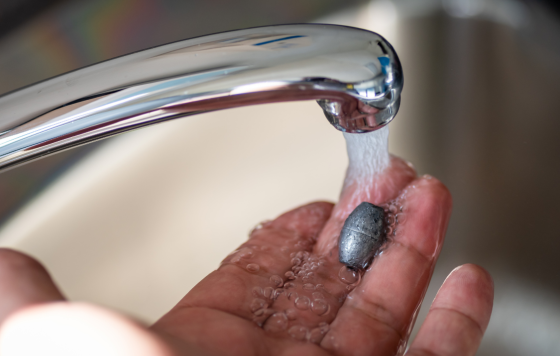By Will Fadely, Baltimore Program Organizer - follow Will on Twitter: @TrillChillWill
This spring, the U.S. Environmental Protection Agency took some long-overdue steps to fix the Clean Water Act, ending confusion over which streams and wetlands are protected by the law. Loopholes in the law created over the past decade have left more the half the stream miles in the U.S. and drinking water sources for 100% of Baltimore City residents at risk from pollution and development.
Polluters and their allies in Congress are fighting tooth and nail to block EPA from taking this common sense step to protect clean water. In the U.S. House and Senate, they’re throwing a series of “dirty water” amendments and riders into the budget and appropriations process, hoping to sneak something through.
Today, on behalf of its 100,000 Maryland members and supporters, Clean Water Action urged U.S. Sen. Barbara Mikulski to oppose all dirty water amendments and riders proposed for the FY 2015 Energy and Water Development and Related Agencies Appropriations bill. Sen. Mikulski is a key clean water leader on the Senate panel which will get first crack at these measures.
Here’s what’s at stake here in Baltimore: 835 miles of streams that flow into drinking water sources and should be protected, along with other streams, wetlands, wildlife habitat and drinking water for 1.6 million Baltimore City residents. All of these precious resources will remain at risk until EPA is allowed to complete its work fixing the Clean Water Act.
We shouldn’t have to worry if the water we rely on for drinking, swimming and fishing is polluted. Nationally, drinking water sources for more than 117 million Americans are threatened and communities are more vulnerable to pollution and flooding.
Until these Clean Water Act loopholes are closed – as EPA is proposing – our seasonal streams and smaller ponds or wetlands remain at risk of pollution and destruction.
Baltimore residents and anyone concerned about clean water anywhere need to take a stand. Local tributaries that feed into larger waterways such as the Back River, Gwynn’s Falls, Jones Falls, the Patapsco River or the Inner Harbor all need to be protected. Together we can take action now to protect the Bay and restore waterways important for our crabs, rockfish, oysters and other Bay critters.
Join with Clean Water Action today to restore protections to small streams and wetlands. EPA’s proposal is based on sound science and will better protect rivers, bays and lakes, our drinking water sources, and will reduce flooding and support habitat for fish and wildlife. In Maryland this means millions of dollars in our economy and hundreds of thousands of jobs, too.
We can’t allow polluters and their allies to hijack the government’s budget as a back-door way to advance their dirty water agenda. Take action for clean water: www.cleanwater.org/NoDirtyWater
Related Posts
Stay Informed
Get the latest updates and actions:
Thanks for signing up!
There was a problem processing your signup. Please try again.


